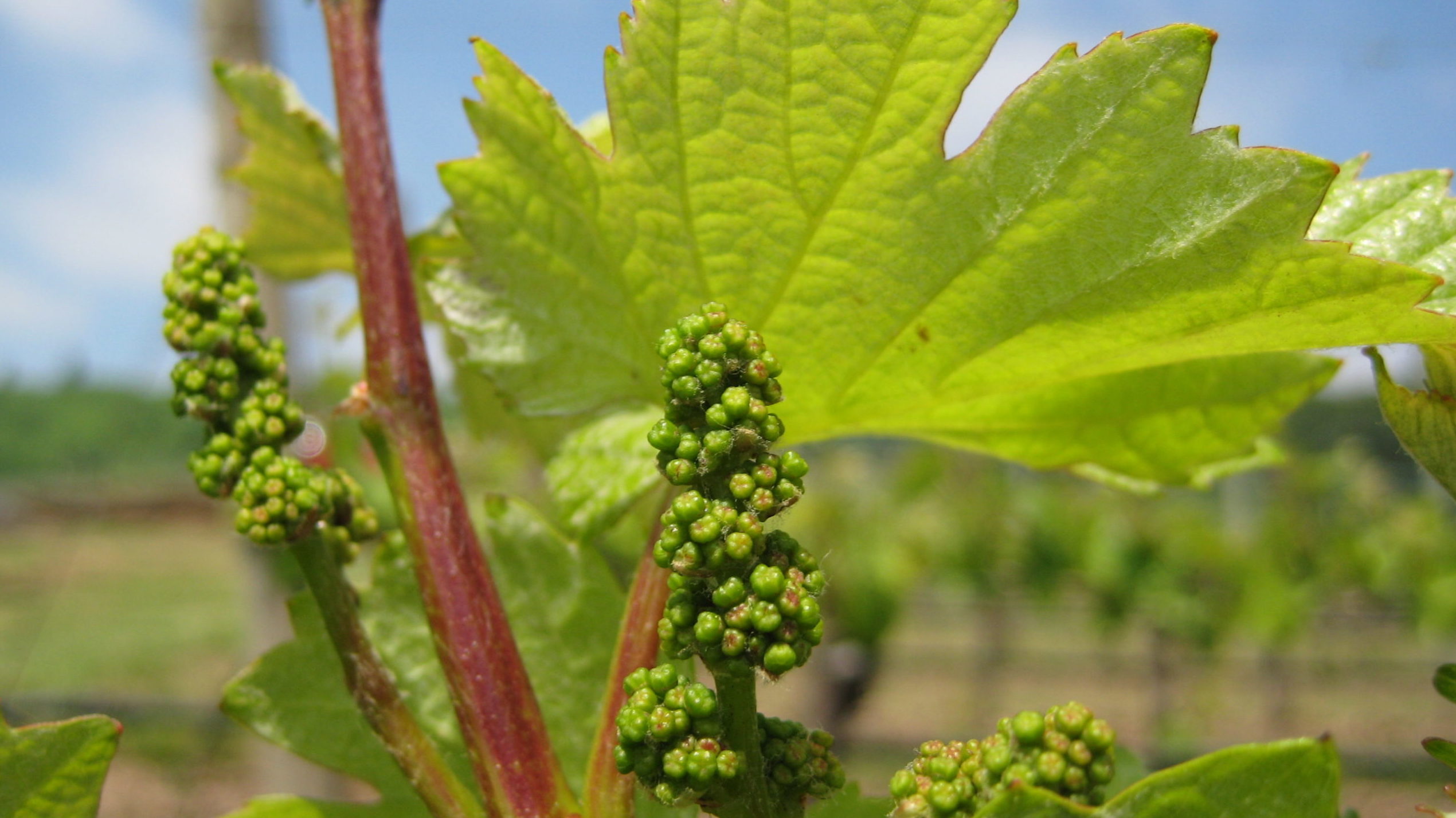Rain by itself has little effect on grape berry bloom and pollination. When it rains, typically temperatures drop so the main effect would be on temperature. In our climatic conditions in the north coast we can have very cool temperatures even without rain do to passing weather systems. With weather systems passing through every few days or more temperatures can fluctuate dramatically.
Grape flowers are self – pollinating they do not need wind or insects. Once the calyptra (flower cap) detaches from the flower base it exposes the stamens and pistil this is referred to as anthesis or bloom. Pollination and fertilization occur next.
Provided there are no nutritional issues or water stress during bloom temperature controls what happens before bloom and during pollination and fertilization. Too cool or to hot reduces fruit set.
Flowering
Cap fall (anthesis) begins around dawn and ends app at noon not all flowers open the same day. Under ideal conditions flowering takes 5 to 7 days. In the north coast flowering typically takes 2 to 3 weeks.
Less than or equal to 59 degrees only a few flowers will open.
Optimum temperature range for flowering is 68 to 77 degrees. Over 95 degrees inhibits flowering.
Pollination Fertilization
The speed which pollen tubes grow towards ovules after petal fall is critical because the ovules are receptive for only a limited period after anthesis 3 to 4 days.
Optimum temperature range for pollen tube growth and fertilization is 77 – 86 degrees.
At 77 – 86 degrees it takes 12 hr.
68 degrees 24 hr.
59 degrees 48 hr.
< 59 degrees no fertilization
Grape berries have the potential for four seeds; only one is needed to be fertilized or the flower will abort. A partially fertilized ovum or some sort of hormonal stimulation can occur resulting in a seed that doesn’t develop. These become what we call shot berries. Shot berries are not true berries and typically crack and dehydrate prior to harvest.
Only 20 to 50 percent of flowers develop into berries following anthesis.
Shatter can occur up to 4 weeks after anthesis.
Data for the above summary came from The Science of Grapevines and The Grapevine chapter 5 – Grape berry growth and development.

